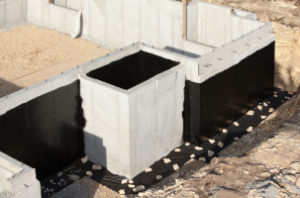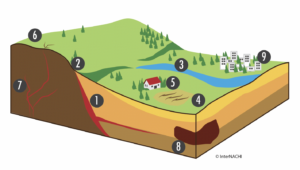Waterproofing the basement is essential for any homeowner, as it helps prevent flooding, mold growth, and structural damage. A basic waterproofing system typically consists of several components, including a drainage system, sump pump, and interior or exterior waterproofing membranes.
The first step to waterproofing the basement is to create a drainage system. This system will collect water from outside the home and channel it away from the foundation, preventing it from seeping in and causing damage. Installing a perimeter and French drain can help direct water away from home.

Basement Waterproofing
The second step is to install a sump pump. A sump pump collects groundwater in a sump basin, then pumps it out of the basement and away from home. This helps to prevent groundwater from pooling around the foundation, which can lead to the foundation cracking or shifting.
Finally, homeowners can apply interior or exterior waterproofing membranes to the basement walls. Internal membranes are applied directly to the basement walls and act as a barrier between the dampness of the basement and the living area. Exterior membranes are used outside the foundation and act as a barrier between the foundation and the surrounding soil.
By taking steps such as creating a drainage system, installing a sump pump, and applying interior or exterior waterproofing membranes, a homeowner can effectively waterproof their basement and protect it from flooding, mold growth, and structural damage. Taking the time to waterproof a basement can save a homeowner thousands of dollars in the long run, making it an essential step for any homeowner.



